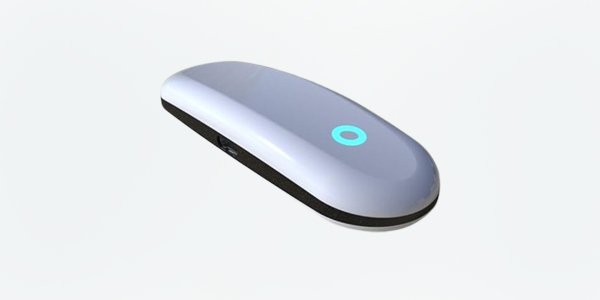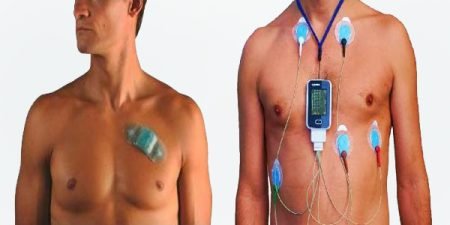1. Introduction to Extended Loop Recorders (ELRs)
ELRs are advanced cardiac monitoring devices designed to continuously record and store ECG data over an extended period, usually ranging from several weeks to months. They are used to detect and diagnose intermittent arrhythmias and other heart conditions.
Purpose:
Enhanced Monitoring: To capture sporadic or infrequent heart rhythm abnormalities that may not be detected during a standard ECG or shorter-term Holter monitor.
2. Why ELRs Are Trending
A. Advancements in Technology
Miniaturization:
Smaller Devices: Modern ELRs are compact and unobtrusive, making them easier for patients to wear and integrate into their daily lives.
Improved Data Storage:
Extended Recording Capabilities: Enhanced storage capacity allows for longer monitoring periods, providing more comprehensive data for diagnosis.
Advanced Analytics:
Real-Time Monitoring: Some ELRs offer real-time data analysis and remote monitoring capabilities, allowing healthcare providers to review data more efficiently.
B. Increased Demand for Comprehensive Cardiac Monitoring
Early Detection of Arrhythmias:
Intermittent Symptoms: ELRs are effective at capturing transient arrhythmias that might be missed during short-term monitoring.
Patient-Centered Care:
Personalized Monitoring: Provides tailored insights into individual patients’ cardiac health, leading to more accurate diagnoses and treatment plans.
C. Enhanced Patient Experience
Comfort and Convenience:
Non-Invasive: ELRs are designed to be worn comfortably for extended periods, with minimal impact on daily activities.
Ease of Use: Patients can wear these devices discreetly, allowing for continuous monitoring without significant disruption.
Fewer Visits:
Remote Monitoring: Reduces the need for frequent clinic visits by allowing for extended monitoring and data collection without requiring patients to be physically present.
D. Improved Diagnostic Accuracy
Comprehensive Data Collection:
Long-Term Insights: Provides a more complete picture of a patient’s cardiac rhythm over time, which is crucial for diagnosing complex or infrequent arrhythmias.
Correlation with Symptoms:
Event Correlation: Enables better correlation of symptoms with arrhythmias by recording data during episodes of symptoms and throughout different daily activities.
E. Advances in Telemedicine and Remote Monitoring
Integration with Digital Health:
Remote Access: ELRs often integrate with telemedicine platforms, allowing healthcare providers to monitor patients’ data remotely and make timely adjustments to treatment.
Patient Empowerment:
Self-Monitoring: Some ELRs provide patients with access to their data, helping them understand their condition and manage their health more proactively.
F. Increased Awareness and Education
Public Awareness:
Educational Efforts: Greater awareness of cardiac health and the availability of advanced monitoring tools like ELRs has driven patient demand for these devices.
Professional Recommendations:
Clinical Guidelines: Updated guidelines and recommendations from cardiology associations emphasize the benefits of extended monitoring, contributing to the trend.
3. Benefits of ELRs
Extended Monitoring:
Long-Term Data: Provides continuous monitoring over weeks or months, capturing rare or intermittent arrhythmias that might be missed during shorter monitoring periods.
Early Intervention:
Timely Diagnosis: Facilitates early detection and treatment of cardiac conditions, potentially preventing more serious complications.
Cost-Effectiveness:
Reduced Healthcare Costs: By minimizing the need for multiple short-term tests and frequent visits, ELRs can be a cost-effective solution for comprehensive cardiac monitoring.
4. Challenges and Considerations
Data Management:
Handling Large Volumes: Managing and interpreting the large volumes of data generated by ELRs can be challenging for healthcare providers.
Patient Compliance:
Adherence: Ensuring that patients adhere to wearing the device properly over extended periods is crucial for obtaining accurate data.
Privacy and Security:
Data Protection: Safeguarding the sensitive health data collected by ELRs is essential, especially with the increasing integration of digital health technologies.
5. Future Trends and Innovations
Technological Developments:
Next-Generation Devices: Emerging advancements in ELR technology, including more compact designs and improved data analytics.
Integration with Wearables:
Smart Devices: Potential for integration with other wearable health devices to provide a more comprehensive view of overall health.
Enhanced Data Analytics:
AI and Machine Learning: Future innovations may include advanced algorithms for more precise data interpretation and prediction of arrhythmias.
6. Conclusion
Summary of Benefits: Recap of why ELRs are becoming increasingly popular, highlighting their technological advancements, patient comfort, and diagnostic accuracy.
Call to Action: Encouragement for patients and healthcare providers to consider ELRs as a valuable tool for extended cardiac monitoring and improved patient outcomes.



